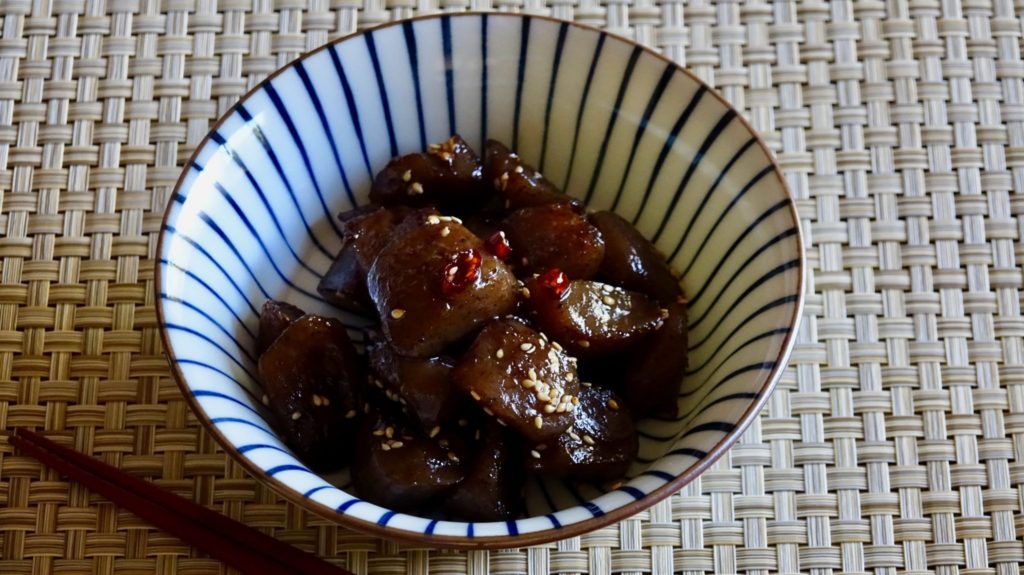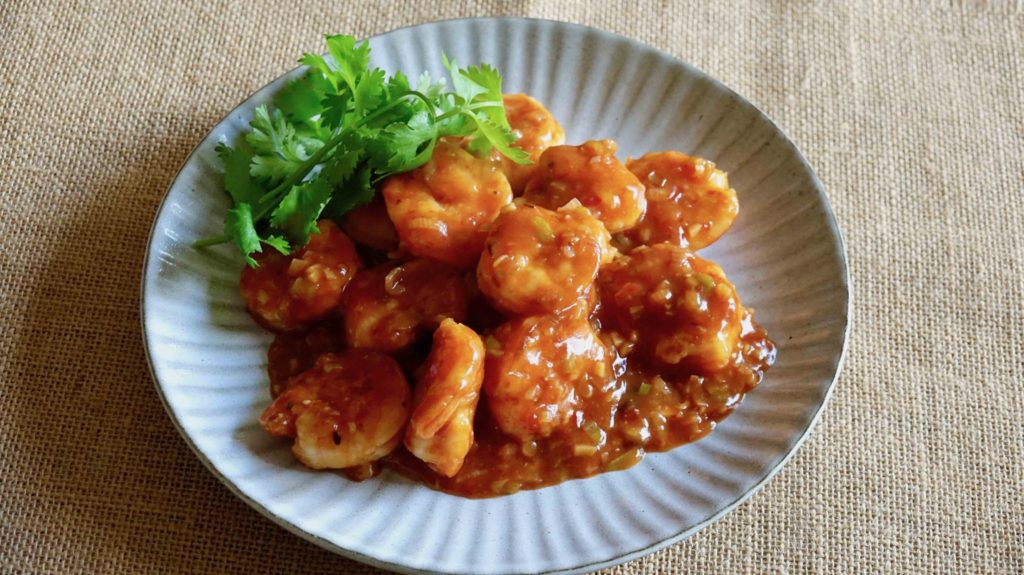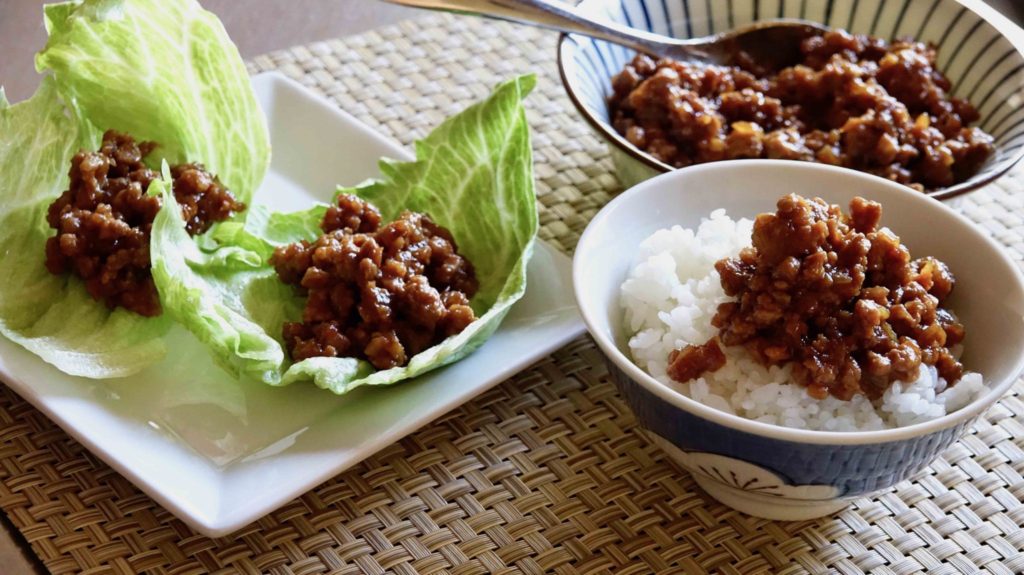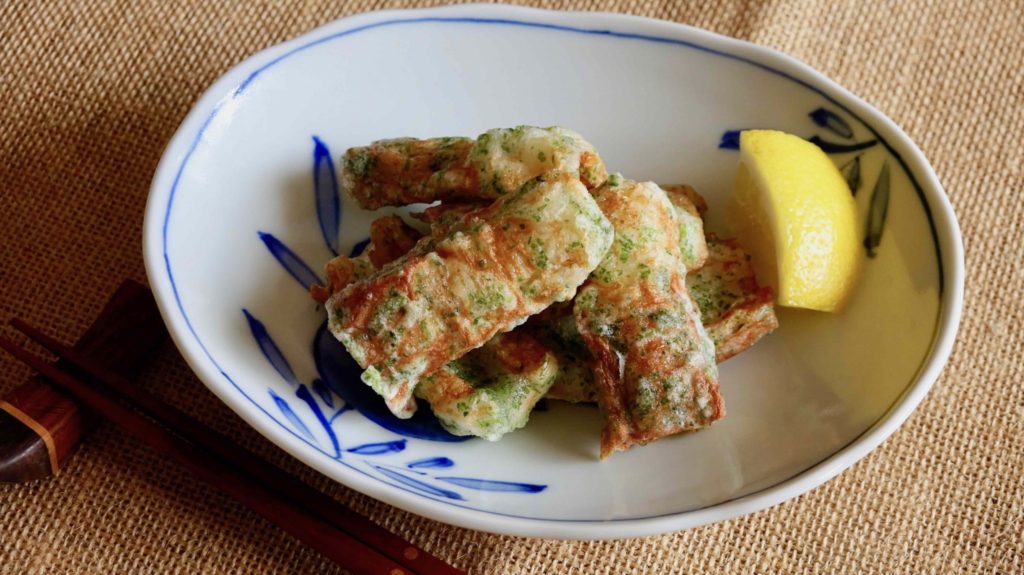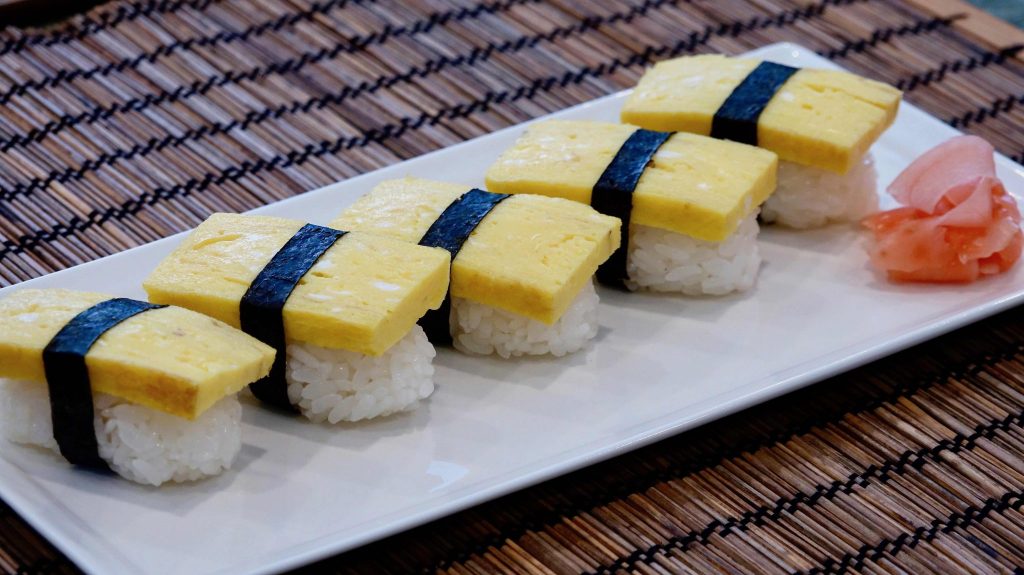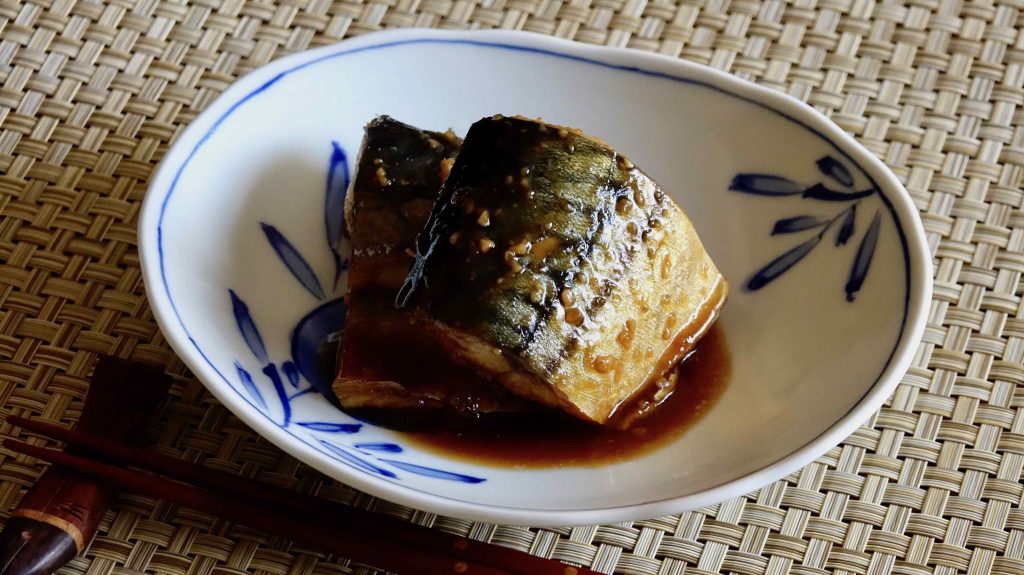Konnyaku Amakarani is braised Konnyaku, a gelatinous food made from Konnyaku potatoes, in a sweet and hot sauce. This little side dish always comes in handy to add one more item to dinner or to fill a small space in a Bento box.
Nikumiso (肉味噌) is braised ground pork seasoned with Miso paste. The ginger and garlic in the dish give a wonderful aroma to it. Even though the red Miso used here is saltier and has a stronger taste than regular Awase (mixed) Miso, the sweetness of onions mellows it out. Nikumiso is not a main dish, but it can be used in many different ways as a side dish. You can simply put it on Steamed Rice and make into a Donburi (bowl). Or use as a filling for Onigiri rice balls to give a twist to your usual dish. You can also add it to your favorite noodles like Udon and Soba, or even pasta. We wrapped Nikumiso with lettuce leaves, and it became a great appetizer. If you multiply the recipe, you can serve for a crowd at a party.
Nikumiso is a tasty side dish you can make ahead. This strongly seasoned beef can be kept in the fridge up to a week. Heat up a little just before serving. Perfect for lunch and busy weekday dinners when you want one more thing!
Koppe Pan (コッペパン) is oblong-shaped white bread similar to an American hot dog bun. It is light and soft, mild in flavor, and one of the very basic and versatile breads in Japan. Koppe Pan can be eaten as is, of course, but most of the time it is used for sandwiching some kind of sweet or savory filling.
Chikuwa Isobeage, perhaps a mouthful to pronounce for non-Japanese speakers, is Tempura Chikuwa (a kind of fishcake) flavored with Aonori (dried seaweed flakes). This deep-fried dish is often a side dish item in commercial Bento, but also a great home-made appetizer that goes well with drinks.
Isobeage is a deep-fried dish that contains some kind of seaweed. Here we added Aonori, dried green seaweed flakes, to the batter to give a distinctive seaweed aroma. But there are lots of kinds of seaweed and lots of possibilities, like wrapping a sheet of roasted seaweed, Nori, with the other ingredients and frying. The batter could be just like Tempura, or it could be much thinner or even no batter at all. Chikuwa is fishcake shaped into sticks or tubes that are long and hollow inside, and it is the most often used meat used in Isobeage. Other seafood like fish and shrimp or even chicken are also suitable for the dish. This is very flexible side dish that you can adjust to your taste and what you have available.
Tamago Sushi (卵寿司) is Sushi Rice topped with sliced cooked egg and wrapped around with a strip of Nori seaweed. It is suppose to be a very popular kind of Sushi among kids and people who don’t eat raw fish, but really, this sweet Tamago Sushi is loved by almost everyone.
Chicken Nanban is deep-fried chicken with tartar sauce, a dish from Miyazaki prefecture in Kyusyu, the southern big island of Japan. The chicken is lightly battered and fried, then dipped in sweet and sour sauce just like Nanbanzuke, marinaded fried fish with vegetables. The fried chicken can be eaten just by itself, but topping with tartar sauce makes it Chicken Nanban. It may not sound like the healthiest Japanese food, but it is a popular kind of lunch dish for many at shops and cafeterias in business areas.
Saba Misoni is one of the most popular staple Japanese fish dishes. It is stewed with Miso paste, and its strong flavor goes very well with Steamed Rice. Saba Misoni is available at many Japanese restaurants for lunch and dinner, and even canned Saba Misoni is very popular for its convenience. It is easy and quick enough to make at home, however, and because the ingredients and steps are rather simple, it is a great entree on busy week nights.
